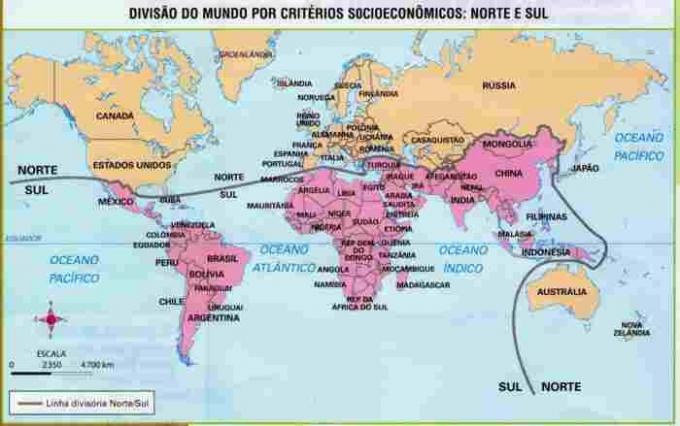In December 13, 1968, the military issued the Institutional Act No. 5, a legal norm that marked the hardening of the Military dictatorship. Through this device, the military had carte blanche to pursue all opponents of the regime, expanding the repression and the torture of individuals.
AI-5 was the completion of a regime hardening project which has been ongoing since the military took power in 1964. This institutional act was a tool used by the military to consolidate authoritarianism and intimidate any attempt at opposition in the country. It was in force for ten years and was responsible for the removal of political rights and the imprisonment of hundreds of people.
Accessalso: The main events that marked the first government of the Military Dictatorship
What determined the AI-5?
![It was during the government of Artur Costa e Silva (1967-69) that Institutional Act No. 5 was issued. [1]](/f/441630aac1de479a3c2e2204de931192.jpg)
AI-5 is a legal norm instituted by the military government that established prerogatives for the military to pursue opponents of the regime. It consisted basically of a tool that gave
legal legality for authoritarianism and repression imposed by the military since 1964. It was a great effort made by them to create legal mechanisms to justify their discretion.This act was announced via radio on December 13, 1968, during the government of Artur Costa e Silva, by the minister of justice Luís Antônio da Gama e Silva. It had 12 articles that imposed sensitive changes in our country and made public the real face of the military dictatorship: repressive, authoritarian and violent.
This act gave the following prerogatives to the President of the Republic at the time:
Close the National Congress, as well as the Legislative Assemblies (state) and the City Councils (municipal);
Decree the intervention of the Federal Government in municipalities and states and appoint interveners for them in accordance with presidential interests;
Cancel political mandates of deputies, senators and councilors;
Suspend the political rights of citizens;
Decree a state of siege without requiring Legislative approval;
Seize resources from citizens.
In addition, through AI-5, it was decreed:
Prohibition of the right to habeas corpus to those accused of committing political crimes;
Government release from having to explain to court any action taken based on the AI-5.
Context
The edition of AI-5 was the manifestation of one of the desires of the military installed in power since 1968: broaden the regime's authoritarian bases. In the period from 1964 to 1968, they sought to create the narrative that would justify the hardening of the regime and found in the “political crisis” of 1968 the perfect excuse for this.
This desire led the military to carry out terrorist attacks in the country throughout 1967 and 1968. These attacks carried out by the far right were discovered by the analysis of official documentation at the time that showed that the retired general Paulo Trajano da Silva led them.
Such actions were conveyed as attacks carried out by the revolutionary left and served to justify the hardening of the regime, and this, in turn, was the explanation given by the military as a necessary measure to guarantee “national security”. These actions, in the aforementioned period, resulted in 14 bomb attacks, in addition to the theft of weapons from police arsenals and banks.
The attacks gave strength to the military's narrative, and the events of 1968 ended up consolidating what they wanted. Thus, they used social and political mobilization against authoritarianism to make the regime more closed and rigid. This year was marked by protestsstudents, mobilizationworker, Catholic Church Opposition and Democratic Political Opposition.
Accessalso: Chilean dictatorship: one of the worst dictatorial regimes in Latin American history
Labor movement
In 1968, the labor movement began to take a stand against the losses the class had suffered since the military took power. The cost of living increased, and workers suffered from a wage freeze and were even prohibited from going on strike. In this adverse and hostile context to them, the solution found by the class was the resistance.
Thus, in 1968, two significant workers' movements exploded: that of Score (MG) and the Osasco (SP). Both were marked by the big strikes which carried out and counted with the adhesion of 16 thousand workers, in the case of Contagem, and of 10 thousand workers, in the case of Osasco. The response of the military, especially in the case of Osasco, was repression and violence.
The ensuing repression against workers across the country significantly weakened the labor movement. The repression in this case was so significant that big companies even provided their spaces for government agents to torture employees allegedly involved in subversive activities, in addition to reporting them directly to the military.
student movement
1968 was, par excellence, a year of great student mobilization. Driven by events in France, students from all over the world took to the streets to fight tyranny. This struggle in Brazil had a palpable dimension, since there was a dictatorial government installed in power for four years.
Student protests gained a lot of strength especially after the student's death Edson Luís de Lima Souto. He was killed as a result of police violence against a student protest in Rio de Janeiro. His death shocked the country and brought more people to the streets.
His wake and funeral was attended by more than 60 thousand people and with violent protests in the streets of Rio de Janeiro|1|, in addition to demonstrations of opposition from members of the Catholic Church. Police repression against these students was also harsh.
In June 1968, the Hundred Thousand March, mobilizing artists and intellectuals in Rio de Janeiro. After that, the government banned the holding of demonstrations and started to intervene directly in universities, in the case of invasion of the University of Brasilia (UnB) by the military the most notorious example of this.
know more: Operation Bandeirante: one of the main operations of the dictatorship to persecute opponents
democratic political opposition
In 1968 there were also demonstrations of political opposition that took place in a democratic way. The two standout cases were the Wide Front, formed in 1966, but banned from acting after 1968, and the case involving the Congressman Márcio Moreira Alves, from the Brazilian Democratic Movement (MDB), the regime's consenting opposition.
THE Wide Front was formed as a reaction of Carloslacerda, liberal who supported the coup in 1964, against the end of the democratic process in Brazil. He intended to run for president in 1965, and as the military canceled with the presidential election, he turned against the regime and formed this political group with the desire to put Brazil on the democratic path again.
Lacerda had the support of JoãoGoulartand juscelinoKubitschek, both former presidents of Brazil, which gave strength to this political organization. As a political alternative of influence against the military, the government decided to act and, thus, in 1968, the Frente Amplio was placed in the illegality and Carlos Lacerda suffered persecution for having turned against the military he once supported.
O fuse for the edition of AI-5 was the case involving the emdebista deputy Márcio Moreira Alves. On September 2, 1968, in a speech to Congress, the opposition deputy encouraged the population to boycott the events that would be held on the approaching September 7th. During this speech, he made harsh statements against the military, calling the Brazilian Army “valcouto of torturers”. He also encouraged Brazilian women who were dating military personnel to boycott their partners, if they were colluding with all the violence committed by the Army during the dictatorship.
The reaction of the military was immediate: requested leave of the deputy so that he could be prosecuted. Congress voted to remove Márcio Moreira Alves and the result was that, by 216 to 141, the deputies refused to obey the request of the military and the emedebista was not removed. The vote to remove Márcio Moreira Alves was also marked by acid comments from opponents against the military.
The result of the defeat of the military in this case was that they got fed up with masking their interests and acted energetically to close the regime and end the opposition once and for all. 1968 was marked by protests by workers, students, artists, intellectuals, members of the Church and now politicians were openly turning against the regime.
The military commanding the country united, called a meeting of the National Security Council that became known in our history as “massblack”, and, hours later, Institutional Act No. 5 was announced.
Read too:What was the Estado Novo? The third and final phase of the Vargas Era
Consequences
Immediately after AI-5, there was annulment of rights and mandatespoliticians, opponents of the regime were trapped and countless professionals were compulsorily retired from their positions, as was the case with several university professors. People like Juscelino Kubitschek, who connived with the coup, and Carlos Lacerda, who supported the coup, were arrested, demonstrating that the regime even turned against those who helped in its construction.
The hardening of the dictatorship was openly consolidated and what was established as "years of lead". AI-5 was only revoked 10 years later by an amendment signed by President Ernesto Geisel on October 13, 1978.
Note
|1| NAPOLITANO, Marcos. History of the Brazilian Military Regime. São Paulo: Context, 2016, p. 89.
Image credit
[1] FGV/CPDOC
By L.do Daniel Neves
History teacher


